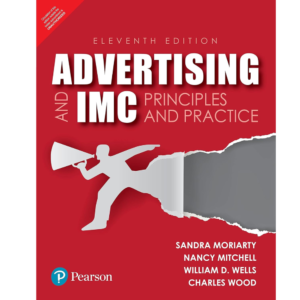About The Author
Donald F. Kuratko is a renowned professor, author, and entrepreneur specializing in entrepreneurship and innovation. He serves as the Jack M. Gill Chair of Entrepreneurship and Executive Director of the Johnson Center for Entrepreneurship & Innovation at Indiana University. With extensive experience, he has authored numerous books and research papers on entrepreneurial leadership, venture creation, and corporate innovation. His work has been recognized globally, influencing entrepreneurship education and business practices. He has received multiple awards for his contributions to the field. Kuratko is widely regarded as a leading expert in entrepreneurship research and education.
Table Of Contents
- Cover Page
- Title Page
- Copyright Page
- Preface
- Acknowledgments
- About the Author
- In Remembrance
- Introduction
- Part 1. The Entrepreneurial Mind-Set in the Twenty-First Century
- Chapter 1. Entrepreneurship: Evolutionary Development—Revolutionary Impact
- 1-1. Entrepreneurs—Breakthrough Innovators
- 1-2. Entrepreneurs Versus Small-Business Owners: A Distinction
- 1-3. Entrepreneurship: A Mind-Set
- 1-4. The Evolution of Entrepreneurship
- 1-5. Avoiding Folklore: The Myths of Entrepreneurship
- 1-5a. Myth 1: Entrepreneurs Are Doers, Not Thinkers
- 1-5b. Myth 2: Entrepreneurs Are Born, Not Made
- 1-5c. Myth 3: Entrepreneurs Are Always Inventors
- 1-5d. Myth 4: Entrepreneurs Are Academic and Social Misfits
- 1-5e. Myth 5: Entrepreneurs Must Fit the Profile
- 1-5f. Myth 6: All Entrepreneurs Need Is Money
- 1-5g. Myth 7: All Entrepreneurs Need Is Luck
- 1-5h. Myth 8: Entrepreneurship Is Unstructured and Chaotic
- 1-5i. Myth 9: Most Entrepreneurial Initiatives Fail
- 1-5j. Myth 10: Entrepreneurs Are Extreme Risk Takers
- 1-6. Approaches to Entrepreneurship
- 1-6a. Schools-of-Thought Approaches to Entrepreneurship
- 1-6b. Process Approaches to Entrepreneurship
- 1-7. The Entrepreneurial Revolution: A Global Phenomenon
- 1-7a. The Impact of Entrepreneurial Ventures in the United States
- 1-7b. The Growth of Gazelles and Unicorns
- 1-7c. Legacy of Entrepreneurial Firms
- 1-8. Twenty-First-Century Trends in Entrepreneurship Research
- 1-8a. The Future Trajectory of Entrepreneurship: The Entrepreneurial Mind-Set
- 1-9. Key Entrepreneurship Concepts
- 1-9a. Entrepreneurship
- 1-9b. Entrepreneur
- 1-9c. Entrepreneurial Discipline
- 1-9d. Entrepreneurial Leadership
- Summary
- Key Terms
- Review and Discussion Questions
- Chapter 2. The Entrepreneurial Mind-Set in Individuals: Cognition and Ethics
- 2-1. The Entrepreneurial Mind-Set
- 2-2. Entrepreneurial Cognition
- 2-2a. Metacognitive Perspective
- 2-2b. Who Are Entrepreneurs?
- 2-2c. Characteristics Associated with the Entrepreneurial Mind-Set
- 2-3. Dealing with Failure
- 2-3a. The Grief Recovery Process
- 2-4. The Entrepreneurial Experience
- 2-5. The Dark Side of Entrepreneurship
- 2-5a. The Entrepreneur’s Confrontation with Risk
- 2-5b. Stress and the Entrepreneur
- 2-5c. The Entrepreneurial Ego
- 2-6. Entrepreneurial Ethics
- 2-7. Ethical Dilemmas
- 2-7a. Ethical Rationalizations
- 2-7b. The Matter of Morality
- 2-7c. Complexity of Decisions
- 2-7d. Online Ethical Dilemmas in E-Commerce
- 2-8. Establishing a Strategy for an Ethical Venture
- 2-8a. Ethical Codes of Conduct
- 2-8b. Ethical Responsibility
- 2-9. Ethical Considerations of Corporate Entrepreneurs
- 2-10. Ethical Leadership by Entrepreneurs
- 2-11. Entrepreneurial Motivation
- Summary
- Key Terms
- Review and Discussion Questions
- Chapter 3. The Entrepreneurial Mind-Set in Organizations: Corporate Entrepreneurship
- 3-1. The Entrepreneurial Mind-Set in Organizations
- 3-2. Corporate Innovation Philosophy
- 3-3. Corporate Entrepreneurship and Innovation
- 3-3a. Defining the Concept of Corporate Entrepreneurship and Innovation
- 3-3b. The Need for Corporate Entrepreneurship and Innovation
- 3-3c. Obstacles to Corporate Entrepreneurship and Innovation
- 3-4. Corporate Entrepreneurship Strategy
- 3-4a. Developing the Vision
- 3-4b. Encouraging Innovation
- 3-4c. Structuring the Work Environment
- 3-4d. Control versus Autonomy
- 3-4e. Preparation for Failure
- 3-4f. Preparing Management
- 3-4g. Developing I-Teams
- 3-5. Sustaining a Corporate Entrepreneurship Strategy
- Summary
- Key Terms
- Review and Discussion Questions
- Chapter 4. Social Entrepreneurship and the Global Environment for Entrepreneurship
- 4-1. Social Entrepreneurship
- 4-1a. Defining the Social Entrepreneur
- 4-1b. Defining the Social Enterprise
- 4-2. Social Enterprise and Sustainability
- 4-2a. Sustainable Entrepreneurship
- 4-2b. Ecopreneurship
- 4-3. Shared Value and the Triple Bottom Line
- 4-3a. Bottom-Line Measures of Economic Performance
- 4-3b. Bottom-Line Measures of Environmental Performance
- 4-3c. Bottom-Line Measures of Social Performance
- 4-4. Benefit Corporations: Promoting Sustainable Enterprises
- 4-5. The Global Marketplace
- 4-5a. Global Entrepreneurs
- 4-5b. Global Thinking
- 4-5c. Diaspora Networks
- 4-5d. Global Organizations and Agreements
- 4-5e. Venturing Abroad
- 4-5f. Methods of Going International
- 4-5g. Researching Foreign Markets
- Summary
- Key Terms
- Review and Discussion Questions
- Intrapreneurship at Alcatel-Lucent
- Telecom Equipment Industry
- Alcatel-Lucent Company Background
- Intrapreneurship
- Boot Camps
- Results
- Issues Before Leclerc in June 2014
- Part 2. Initiating Entrepreneurial Ventures
- Chapter 5. Innovation: The Creative Pursuit of Ideas
- 5-1. Opportunity Identification: The Search for New Ideas
- 5-1a. Sources of Innovative Ideas
- 5-1b. The Knowledge and Learning Process
- 5-2. Entrepreneurial Imagination and Creativity
- 5-2a. The Role of Creative Thinking
- 5-2b. The Nature of the Creative Process
- 5-2c. Developing Your Creativity
- 5-3. A Creative Exercise
- Developing a Functional Perspective
- 5-4. A Creative Exercise
- Using Your Brains
- 5-5. A Creative Exercise
- Eliminating Muddling Mind-Sets
- 5-5a. Arenas of Creativity
- 5-5b. The Creative Climate
- 5-6. Innovation and the Entrepreneur
- 5-6a. The Innovation Process
- 5-6b. Types of Innovation
- 5-6c. The Major Misconceptions of Innovation
- 5-6d. Principles of Innovation
- Summary
- Key Terms
- Review and Discussion Questions
- Chapter 6. Assessment of Entrepreneurial Opportunities
- 6.1. The Challenge of New-Venture Start-Ups
- 6-2. Pitfalls in Selecting New Ventures
- 6-2a. Lack of Objective Evaluation
- 6-2b. No Real Insight into the Market
- 6-2c. Inadequate Understanding of Technical Requirements
- 6-2d. Poor Financial Understanding
- 6-2e. Lack of Venture Uniqueness
- 6-2f. Ignorance of Legal Issues
- 6-3. Critical Factors for New-Venture Development
- 6-3a. Uniqueness
- 6-3b. Investment
- 6-3c. Growth of Sales
- 6-3d. Product Availability
- 6-3e. Customer Availability
- 6-4. Why New Ventures Fail
- 6-5. The Traditional Venture Evaluation Processes
- 6-5a. Profile Analysis Approach
- 6-5b. Feasibility Criteria Approach
- 6-5c. Comprehensive Feasibility Approach
- 6-6. The Contemporary Methodologies for Venture Evaluation
- 6-6a. The Design Methodology
- 6-6b. Design-Centered Entrepreneurship
- 6-6c. The Lean Start-Up Methodology
- 6-7. The Challenge of New Venture Legitimacy
- Summary
- Key Terms
- Review and Discussion Questions
- Appendix 6A: Feasibility Plan Outline
- Chapter 7. Pathways to Entrepreneurial Ventures
- 7-1. Creating New Ventures
- 7-1a. New-New Approach to Creating New Ventures
- 7-1b. New-Old Approach to Creating New Ventures
- 7-1c. A Newness Framework for New Ventures
- 7-1d. Examining the Financial Picture When Creating New Ventures
- 7-2. Acquiring an Established Entrepreneurial Venture
- 7-2a. Personal Preferences
- 7-2b. Examination of Opportunities
- 7-2c. Advantages of Acquiring an Ongoing Venture
- 7-2d. Evaluation of the Selected Venture
- 7-2e. Key Questions to Ask
- 7-2f. Negotiating the Deal
- 7-3. Franchising: The Hybrid
- 7-3a. How Franchising Works
- 7-3b. Advantages of Franchising
- 7-3c. Disadvantages of Franchising
- 7-3d. Franchise Law
- 7-3e. Evaluating Franchising Opportunities
- 7-4. Incubators, Accelerators, and Entrepreneurial Ecosystems
- Incubators
- Summary
- Key Terms
- Review and Discussion Questions
- Chapter 8. Sources of Capital for Entrepreneurs
- 8-1. The Search for Capital
- 8-2. Debt versus Equity Financing
- 8-2a. Debt Financing
- 8-2b. Equity Financing
- 8-3. The Venture Capital Market
- 8-3a. Recent Developments in Venture Capital
- 8-3b. Dispelling Venture Capital Myths
- 8-3c. Venture Capitalists’ Objectives
- 8-3d. Criteria for Evaluating New-Venture Proposals
- 8-3e. Evaluating the Venture Capitalist
- 8-4. Informal Risk Capital: Angel Financing
- 8-4a. Types of Angel Investors
- Summary
- Key Terms
- Review and Discussion Questions
- Part 3. Developing the Entrepreneurial Plan
- Chapter 9. Legal Challenges for Entrepreneurial Ventures
- 9-1. Intellectual Property Protection: Patents
- 9-1a. Securing a Patent: Basic Rules
- 9-1b. Securing a Patent: The Application
- 9-2. Intellectual Property Protection: Copyrights
- 9-2a. Understanding Copyright Protection
- 9-2b. Protecting Ideas?
- 9-3. Intellectual Property Protection: Trademarks
- 9-3a. Avoiding Trademark Pitfalls
- 9-3b. Trade Secrets
- 9-3c. Trademark Protection on the Internet
- 9-4. Legal Structures for Entrepreneurial Ventures
- 9-4a. Sole Proprietorships
- 9-4b. Partnerships
- 9-4c. Corporations
- 9-5. Partnerships and Corporations: Specific Forms
- 9-5a. Limited Partnerships
- 9-5b. Limited Liability Partnerships
- 9-5c. S Corporations
- 9-5d. Limited Liability Companies
- 9-5e. B Corporations
- 9-5f. L3C
- 9-6. Final Thoughts on Legal Forms
- 9-7. Bankruptcy
- 9-7a. The Bankruptcy Act
- 9-7b. Chapter 7: Straight Bankruptcy
- 9-7c. Chapter 11: Reorganization
- 9-7d. Chapter 13: Adjustment of Debts
- 9-8. Minimizing Legal Expenses
- Summary
- Key Terms
- Review and Discussion Questions
- Chapter 10. Marketing Challenges for Entrepreneurial Ventures
- 10-1. The New Marketing Concept for entrepreneurs
- 10-2. Marketing Research
- 10-2a. Defining the Research Purpose and Objectives
- 10-2b. Gathering Secondary Data
- 10-2c. Gathering Primary Data
- 10-2d. Quantitative versus Qualitative Marketing Research
- 10-2e. Interpreting and Reporting Information
- 10-2f. Marketing Research Questions
- 10-3. Inhibitors to Marketing Research
- 10-3a. Cost
- 10-3b. Complexity
- 10-3c. Strategic Decisions
- 10-3d. Irrelevancy
- 10-4. Social Media Marketing
- 10-4a. Key Distinctions of Social Media Marketing
- 10-4b. Developing a Social Media Marketing Plan
- 10-4c. Mobile Marketing
- 10-5. Entrepreneurial Tactics in Market Research
- Guerrilla Marketing
- 10-6. The Components of Effective Marketing
- 10-6a. Marketing Philosophy
- 10-6b. Market Segmentation
- 10-6c. Consumer Behavior
- 10-7. Developing a Marketing Plan
- 10-7a. Current Marketing Research
- 10-7b. Current Sales Analysis
- 10-7c. Marketing Information System
- 10-7d. Sales Forecasting
- 10-7e. Evaluation
- 10-7f. Final Considerations for Entrepreneurs
- 10-8. Pricing Strategies
- 10-8a. Views of Pricing
- 10-8b. Product Life Cycle Pricing
- 10-8c. Pricing in the Social Media Age
- Summary
- Key Terms
- Review and Discussion Questions
- Chapter 11. Financial Preparation for Entrepreneurial Ventures
- 11-1. The Importance of Financial Information for Entrepreneurs
- 11-2. Understanding the Key Financial Statements
- 11-2a. The Balance Sheet
- 11-2b. The Income Statement
- 11-2c. The Cash-Flow Statement
- 11-3. Preparing Financial Budgets
- 11-3a. The Operating Budget
- 11-3b. The Cash-Flow Budget
- 11-4. Pro Forma Statements
- 11-5. Capital Budgeting
- 11-5a. Payback Method
- 11-5b. Net Present Value
- 11-5c. Internal Rate of Return
- 11-6. Break-Even Analysis
- 11-6a. Break-Even Point Computation
- 11-7. Ratio Analysis
- Summary
- Key Terms
- Review and Discussion Questions
- Chapter 12. Developing an Effective Business Plan
- 12-1. Pitfalls to Avoid in the Venture Planning Process
- 12-1a. Pitfall 1: No Realistic Goals
- 12-1b. Pitfall 2: Failure to Anticipate Roadblocks
- 12-1c. Pitfall 3: No Commitment or Dedication
- 12-1d. Pitfall 4: Lack of Demonstrated Experience (Business or Technical)
- 12-1e. Pitfall 5: No Market Niche (Segment)
- 12-2. Business Model Canvas: Initiating the Venture Formation Process
- 12-3. What is a Business Plan?
- 12-4. Benefits of a Business Plan
- 12-5. Developing a Well-Conceived Business Plan
- 12-5a. Who Reads the Plan?
- 12-5b. Putting the Package Together
- 12-5c. Guidelines to Remember
- 12-5d. Questions to Be Answered
- 12-6. Elements of a Business Plan
- 12-6a. Executive Summary
- 12-6b. Business Description
- 12-6c. Marketing Segment
- 12-6d. Market Niche and Market Share
- 12-6e. Research, Design, and Development Segment
- 12-6f. Operations Segment
- 12-6g. Management Segment
- 12-6h. Financial Segment
- 12-6i. Critical-Risks Segment
- 12-6j. Harvest Strategy Segment
- 12-6k. Milestone Schedule Segment
- 12-6l. Appendix and/or Bibliography Segment
- 12-7. Updating the Business Plan
- 12-7a. A Practical Example of a Business Plan
- 12-8. Presentation of the Business Plan: The “Pitch”
- 12-8a. Suggestions for Presentation
- 12-8b. What to Expect
- Summary
- Key Terms
- Review and Discussion Questions
- Appendix 12A: Hydraulic Wind Power, LLC
- Part 4. Growth Strategies for Entrepreneurial Ventures
- Chapter 13. Strategic Entrepreneurial Growth
- 13-1. Strategic Planning and Emerging Firms
- 13-2. The Nature of Strategic Planning
- 13-2a. The Lack of Strategic Planning
- 13-2b. The Value of Strategic Planning
- 13-2c. Fatal Visions in Strategic Planning
- 13-2d. Entrepreneurial and Strategic Actions
- 13-2e. Strategic Positioning: The Entrepreneurial Edge
- 13-2f. An Entrepreneurial Strategy Matrix Model
- 13-3. Managing Entrepreneurial Growth
- 13-3a. Venture Development Stages
- 13-3b. Transitioning from Entrepreneurial to Managerial
- 13-3c. Understanding the Growth Stage
- 13-3d. Managing Paradox and Contradiction
- 13-3e. Confronting the Growth Wall
- 13-4. Building an Entrepreneurial Company in the Twenty-First Century
- 13-4a. The Entrepreneurial Mind-Set
- 13-4b. Key Elements for an Entrepreneurial Firm
- 13-5. Unique Managerial Concerns of Growing Ventures
- 13-5a. The Distinctiveness of Size
- 13-5b. The One-Person-Band Syndrome
- 13-5c. Time Management
- 13-5d. Community Pressures
- 13-5e. Continuous Learning
- 13-6. Achieving Entrepreneurial Leadership for the Future
- Summary
- Key Terms
- Review and Discussion Questions
- Chapter 14. Valuation of Entrepreneurial Ventures
- 14-1. The Importance of Business Valuation
- 14-2. Underlying Issues When Acquiring a Venture
- 14-2a. Goals of the Buyer and the Seller
- 14-2b. Emotional Bias
- 14-2c. Reasons for the Acquisition
- 14-3. Due Diligence
- 14-4. Analyzing the Business
- 14-5. Establishing a Firm’s Value
- 14-5a. Valuation Methods
- 14-6. Term Sheets in Venture Valuation
- 14-7. Additional Factors in the Valuation Process
- 14-7a. Avoiding Start-Up Costs
- 14-7b. Accuracy of Projections
- 14-7c. Control Factor
- Summary
- Key Terms
- Review and Discussion Questions
- Appendix 14A: Term Sheet
- Chapter 15. Harvesting the Entrepreneurial Venture
- 15-1. Harvesting the Venture: A Focus on the Future
- 15-2. The Management Succession Strategy
- 15-3. Key Factors in Succession
- 15-3a. Succession Pressures and Interests inside the Firm
- 15-3b. Succession Pressures and Interests Outside the Firm
- 15-3c. Forcing Events
- 15-3d. Sources of Succession
- 15-3e. Legal Restrictions
- 15-4. Developing a Succession Strategy
- 15-4a. Understanding Contextual Aspects of Succession
- 15-4b. Identifying Successor Qualities
- 15-4c. Writing a Succession Strategy
- 15-5. The Exit Strategy: Liquidity Events
- 15-5a. The Initial Public Offering (IPO)
- 15-6. Complete Sale of the Venture
- 15-6a. Steps for Selling a Business
- Summary
- Key Terms
- Review and Discussion Questions
Product Details
- Publisher : CENGAGE INDIA (January 1, 2022)
- Language : English
- ISBN-13 : 978-9355734006
- Item Weight : 1 Kg
- Dimensions : 20.29 x 25.4 x 4.70 cm
About The Book
“Entrepreneurship: Theory, Process, Practice” (11th Edition) by Donald F. Kuratko is a comprehensive guide to understanding entrepreneurship principles, innovation, and business development. The book covers entrepreneurial mindset, opportunity recognition, business planning, and venture growth strategies. It blends theoretical concepts with real-world case studies, offering insights into successful startups and business ventures. The MindTap digital resource enhances learning through interactive tools, quizzes, and practical exercises. This edition integrates latest trends, global perspectives, and emerging business models. Ideal for students, educators, and aspiring entrepreneurs, it provides a step-by-step approach to launching and managing a business successfully.














Reviews
There are no reviews yet.